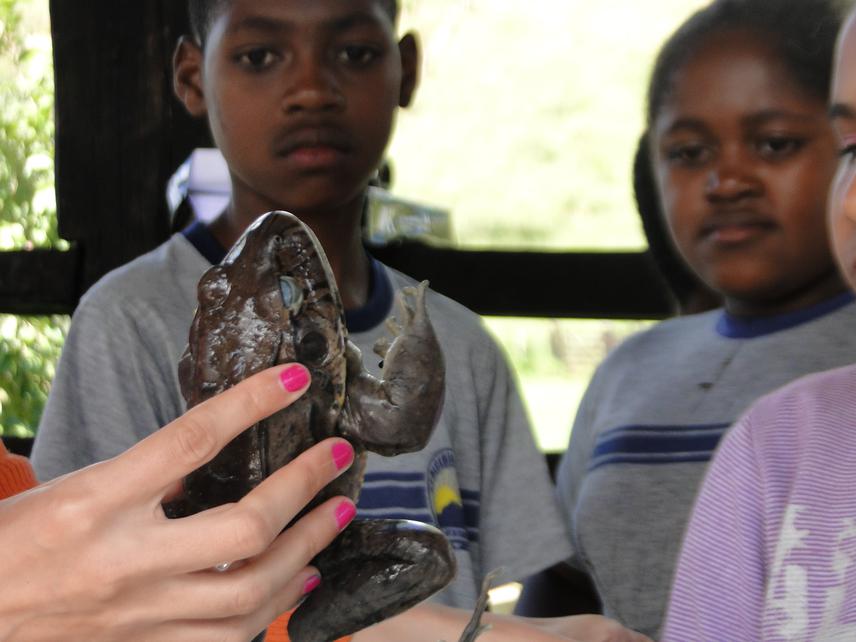Izabela Menezes Barata
Other projects
30 Mar 2017
Facing Fire in the Mountaintops: Responses of a Rare Amphibian Species to a Stochastic Event
Evaluate the effects of climate change on known populations of Crossodactylodes itambe, and address conservation priorities for mountaintops species and highland ecosystems within the Espinhaço Range

Crossodactylodes comprises four endemic frogs living in bromeliads on highlands at Atlantic Rain Forest. Range-restricted species, particularly mountaintop species, show severe range contractions and have been the first group in which entire species have gone extinct due to climate change. Crossodactylodes itambe occurs in an area smaller than 10km2 and 1800m asl at low temperatures in a single species of bromeliad, and is probably affected by climate change and bromeliad-collecting. It is found at Pico do Itambe State Park, located at South Espinhaço Range in a transitional area between hotspots biomes, and recently recognized as a Biosphere Reserve.
On the Espinhaço Range 26% of amphibians are endemic and the greatest challenge is to fulfil information gaps about species occurrence on areas over 1700m asl. Niche modeling is a powerful tool for identifying suitable habitat for target species and will determinate areas of better suitability where new populations will be searched. Occupancy models will be used to design a long-term monitoring protocol, which is essential to assess priorities for conservation and inform the state of nature. Searching new populations and modelling species occupancy will contribute to the evaluation of the conservation status of the genus and the species. Awareness-raising activities will empower local stakeholders with information about the new species and its habitat. These actions will improve environmental knowledge and get stakeholders involved to species conservation and habitat protection at Pico do Itambe State Park and surroundings. Project is supported by six guidelines established by the National Action Plan and aims to:
(1) investigate highlands areas within the Espinhaço Range,
(2) implement a long-term monitoring protocol for changes in population under climate change,
(3) promote awareness-raising and empower local stakeholders.